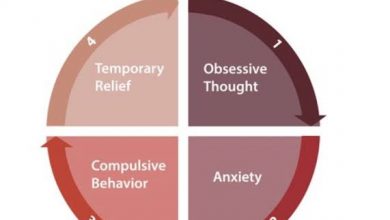Changing exam pattern of CLAT and AILET

The examination system in India is undergoing many changes, and it is important to know that the CLAT and AILET are also changing.
The CLAT pattern was modified in 2020 by reducing the number of questions from 200 to 150, within 120 minutes.
This was a significant change among both the legal community and law students. Following suit, NLU Delhi has now modified the AILET pattern for 2022.
In this article, we will discuss what changes have occurred in the CLAT and AILET law examinations in recent years. All aspirants preparing for these examinations should be familiar with those changes.
| Table of Content: |
|
Overview
The CLAT is a national-level entrance examination for admission to 21 national law universities in India. A consortium of national Law Universities conducts this examination.
Every year in May. Candidates who wish to get into NLUs must appear for the CLAT exam. The test scores used for admission to integrated BA LLB, BBA LLB, BCom LLB, and BSc LLB programs offered at NLUs.
The All India Law Entrance Test (AILET) is an annual entrance exam conducted by the National Law University, Delhi, for admission to its five-year integrated BA LLB and LLM programs.
The exam is also open to candidates seeking admission to other NLUs across India. The AILET was established in 2008, and since then, the exam has undergone several changes
CLAT Exam Pattern
The CLAT 2023 exam pattern has been announced by the Consortium of National Law Universities (CNLUs).
The pattern describes the types of questions asked in CLAT 2023, the marking scheme, the allocation of marks by subject, and other important details.
According to the CLAT exam pattern, the test is offline, and the question paper will have objective-type questions. The test will last 120 minutes.
Before starting CLAT preparation, candidates should extensively examine the exam pattern.
Besides that, candidates can refer to the CLAT syllabus, which highlights key topics from each section of the law entrance exam.
Read the entire article below to learn about the new CLAT exam pattern, section weightage, curriculum, and other important information.
CLAT Exam Pattern: Highlights
Here are the critical aspects of the CLAT exam pattern, along with details regarding the type of questions, test medium, and other details:
| Particular | Details |
| Exam mode | Pen-and-paper exam |
| Exam duration | Two hours |
| Test language | English |
| Type of questions | Multiple-Choice Questions (MCQs) |
| Exam subjects | Five (English Language, Current Affairs including General Knowledge, Legal Reasoning, Logical Reasoning, Quantitative Techniques) |
| Total Questions | CLAT UG – 150 questions |
| CLAT PG – 120 questions | |
| Maximum marks | CLAT UG – 150 questions |
| CLAT PG – 120 marks | |
| Marking scheme | +1 for the correct answer
-0.25 for incorrect answer |
CLAT UG syllabus
Candidates should be familiar with the CLAT syllabus and the test pattern. It will assist students in understanding the types of questions asked in the CLAT exam and the allocation of marks for each section.
CLAT 2023 consists of five sections: legal aptitude, general knowledge and current affairs, mathematics, logical thinking, and the English language.
The details for each segment are below.
| Subject/topics | The total number of questions | Percentage weightage |
| English Language | 28-32 questions | 20% |
| Legal Reasoning | 35-39 questions | 25% |
| Current Affairs, including General Knowledge | 35-39 questions | 25% |
| Quantitative Techniques | 13-17 questions | 10% |
| Logical Reasoning | 28-32 questions | 20% |
CLAT PG Syllabus
Candidates taking the PG-CLAT 2023 have a solid understanding of the graduation level. CLAT LLM will include questions from common subjects in the LLB program.
The syllabus is in detail below.
| Subject | No. of Question | Marks |
| Constitutional Law | 60 | 60 |
| Other Law Subjects, include Contract, Torts, Criminal Law, International Law, IPR, and Jurisprudence. | 60 | 60 |
| Total | 120 | 120 |
CLAT Exam Pattern Analysis
- English: Candidates will answer in the paragraph. They will get 450-word comprehension passages from contemporary or historically significant fiction and non-fiction writing.
- Quantitative Techniques: This section will comprise a series of questions, followed by a short collection of facts or propositions, Graphs, or other textual, pictorial, or diagrammatic numerical information representations.
- Logical Reasoning: This portion will consist of short (300-word) passages. Candidates must detect patterns, logic, and arguments and respond accordingly.
- Legal Reasoning: Candidates must read passages of around 450 words each in this section. The passages may be about actual events or situations involving legal, public policy, or moral philosophical questions.
- Current Affairs and General Knowledge: Candidates must answer questions based on passages of up to 450 words each. The passages are from news articles, journalistic sources, and other nonfiction works.
CLAT Preparation Tips
CLAT is one of the toughest law admissions tests, so achieving a high rank can be difficult. Top 10 Clat Exam Preparation Tips for The Clat Examination should take six to seven months for candidates.
Here are some pointers to help applicants plan their CLAT prep.
- Read the CLAT syllabus and the exam pattern thoroughly.
- Find the best CLAT preparation books and study materials.
- Make a routine that includes at least five to six hours of daily study. Try to cover a variety of subjects and topics.
- Concentrate on conceptual knowledge and take brief notes. Regularly review your notes.
- Daily newspapers such as The Hindu and The Indian Express.
- Solve CLAT sample papers and previous year’s papers to improve your preparation.
AILET Exam Pattern
The AILET Exam Pattern 2023 for the BBA, LLB, LLM, and Ph.D. Exams were released by NLU, Delhi.
Candidates preparing for the AILET Exam must know the paper pattern to make their preparations more productive and successful. The AILET 2023 exam pattern is crucial for students taking the examination.
NLU Delhi has made significant changes to the exam pattern for AILET. NLU Delhi changed the syllabus, eliminating Legal Aptitude and Elementary Mathematics from the AILET paper pattern.
Legal concepts are there in the logical reasoning part to evaluate the candidate’s familiarity with legal reasoning. However, the examination does not require a prior understanding of the law, legal concepts, or principles.
AILET Exam Pattern – Highlights
Here are the key aspects of the AILET exam pattern, along with details regarding the type of questions, test medium, and other details:
| Particulars | Details( BA LLB) | Details ( LLM) |
| Exam mode | Offline | Offline |
| Time duration | 90 minutes | 90 minutes |
| Type of questions | Multiple choice questions (MCQs) | Multiple choice questions (MCQs) and descriptive |
| Total Questions | 150 | 100 MCQs and 10 descriptives (Only 2 to be answered from the descriptive section) |
| Marking scheme | For each accurate response, one mark; for each incorrect attempt, a 0.25 mark will be deducted. | For each right answer, 1 mark;
0.25 mark will be deducted for a wrong attempt |
| Descriptive section – Each question will carry 25 marks. | ||
| Language of the exam | English | English |
AILET Syllabus: BA(LLB)
| Section | Subject | Question | Marks |
| Section A | English language | 50 | 50 |
| Section B | General knowledge (Current affairs) | 30 | 30 |
| Section C | Reasoning | 70 | 70 |
| Total | 150 | 150 | |
AILET Syllabus: LLM
| Section | Subject | Question | Marks |
| Section A | Part -1 English language | 50 | 50 |
| Part -2: logical reasoning | 50 | 50 | |
| Section B | Legal knowledge – From different branches of law | There will be ten questions.
Two questions to be answered |
50 (25 marks each) |
| Total | 102 | 150 | |
AILET Exam Pattern Analysis
- The AILET Exam will be conducted on paper and pen.
- Candidates with a physical OMR sheet to mark their answers.
- There will be 150 questions on the AILET BA LLB examination.
- The AILET LLM exam will have 100 questions and ten descriptive questions.
- The descriptive questions in the AILET LLM test will be worth 25 marks each.
- Each correct answer will receive one mark, while each incorrect answer will receive 0.25 marks.
- The AILET examination will last 90 minutes.
AILET Preparation Tips
AILET is one of the most challenging college admissions tests. Having a good rank can take time and effort. AILET preparation should take four to seven months for candidates.
Here are some pointers to help applicants plan their AILET preparation
- Make a study schedule and plan your everyday activities with the AILET in mind.
- Spend four to five hours a day studying and be consistent.
- Make short notes, flow charts, and diagrams as necessary for AILET preparation and review them regularly.
- Complete the AILET course at least two months before the exam.
- Take AILET practice tests and solve AILET’s previous year’s papers in the final two to three months.
Conclusion
As we can see, the exam patterns for CLAT and AILET are changing. While this may be confusing for some students, it is important to stay up-to-date on these changes for whatever format the examination may take.
This article has shared all the details of AILET vs LSAT: Which one is more complicated? from the syllabus and tips to the new exam pattern.
Read more:- Check CLAT Eligibility Criteria 2023!
Frequently asked questions (FAQs)
- Will AILET 2023 examination have any negative markings on the paper?
Yes, In AILET 2023, each incorrect answer will result in a 0.25 marks deduction.
- How will the AILET exam be conducted in 2023?
The AILET exam will be in an offline mode.
- Is there any negative marking on the CLAT 2023 exam?
Yes, 0.25 marks will be penalized for each incorrect answer.





